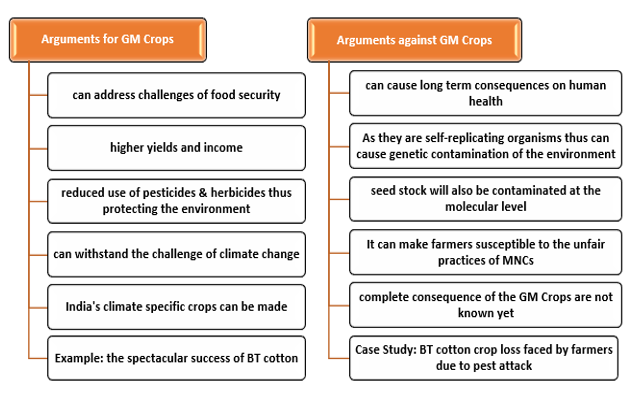- Courses
- GS Full Course 1 Year
- GS Full Course 2 Year
- GS Full Course 3 Year
- GS Full Course Till Selection
- MEP (Mains Enrichment Programme) Data, Facts
- Essay Target – 150+ Marks
- Online Program
- GS Recorded Course
- NCERT (Recorded 500+ Hours)
- Polity Recorded Course
- Geography Recorded Course
- Economy Recorded Course
- AMAC Recorded Course
- Modern India, Post Independence & World History
- Environment Recoded Course
- Governance Recoded Course
- Science & Tech. Recoded Course
- International Relations and Internal Security Recorded Course
- Disaster Management Module Course
- Ethics Recoded Course
- Current Affairs Recoded Course
- CSAT
- 5 LAYERED ARJUNA Mentorship
- Public Administration Optional
- ABOUT US
- OUR TOPPERS
- TEST SERIES
- FREE STUDY MATERIAL
- VIDEOS
- CONTACT US
Dhara Mustard Hybrid DMH-11
Dhara Mustard Hybrid DMH-11

Latest Context:
- Recently, DMH-11 has failed to meet the minimum weight criteria required for the commercial release as a ‘seed’.
- Basically, the DMH-11 has a weight of almost 3.5 grams per 1,000 seeds, which is lower than the norm of 4.5 grams to be eligible for approval as a seed variety.
What are Genetically Modified (GM) crops?
- About: GM crops, also known as genetically engineered or biotech crops, are plants whose genetic material has been altered in a way that does not occur naturally through mating or natural recombination.
- Mechanism: This genetic modification is achieved through a process called genetic engineering, where specific genes are inserted, deleted, or modified to give the plant new traits or characteristics.
- Significance: The primary goals of GM crops are to enhance their traits in ways that improve crop yields, increase resistance to pests and diseases, reduce the need for chemical pesticides and herbicides, and enhance their nutritional content.
- Regulating Authority: Under the provisions of the Environment (Protection) Act of 1986, the Union Ministry of Environment, Forest and Climate Change (MoEFCC) in India is responsible for regulating all GMO-related activities and products.
- All actions, including the import, export, transportation, manufacturing, use, or sale of GMOs, are subject to evaluation, monitoring, and approval by the MoEFCC's Genetic Engineering Appraisal Committee (GEAC).
- The Food Safety and Standards Act of 2006 also mandates that the Food Safety and Standards Authority of India (FSSAI) shall regulate GM foods.
Background of Genetically Modified (GM) crops in India
1990s: Research on GM crops started.
2002: Bt cotton (Bollgard), India's first GM crop, was officially approved for commercial cultivation mainly in states like Gujarat and Andhra Pradesh.
2006: India approved the commercial cultivation of Bt brinjal but imposed a restriction in 2010 due to concerns about the safety and preventing its release for commercial cultivation
2009: The GEAC granted approval for field trials of several GM crops, including rice, maize, and chickpea.
2012: India approved Bt cotton with a second-generation trait known as Bt cotton II. Field trials of other GM crops, such as genetically modified mustard continued.
2015: The Supreme Court mandated strict regulations and safeguards for GM crop research and field trials that were banned earlier by the court due to biosafety
2017: India's GEAC approved the commercial cultivation of GM mustard (DMH-11).
2021: The Supreme Court of India ruled that the government should make the final decision regarding the commercialization of GM mustard as commercial release of GM mustard faced public protests and legal challenges,
2022: The Genetic Engineering Appraisal Committee (GEAC), has approved the environmental release of Dhara Mustard Hybrid-11 (DMH-11).
2023: GM mustard failed to meet the minimum weight criteria required for the commercial release as a ‘seed’.

About Dhara Mustard Hybrid (DMH-11)
- Development: It was developed by the Delhi University’s Centre for Genetic Manipulation of Crop Plants (CGMCP) through genetic engineering techniques to add three key genes that confer specific traits:
- Bar gene: Provides resistance to the herbicide Basta (glufosinate ammonium), allowing for effective weed control.
- Barnase and Barstar genes: These genes are used in hybridization to maintain male sterility, which is essential for producing hybrid seeds.
- Purpose: The development of DMH-11 aimed to increase mustard yields in India, making the country less reliant on mustard oil imports and improving the income of mustard farmers. It was developed to enhance crop productivity and reduce the importation of edible oils.
- Yield Improvement: Advocates for DMH-11 claimed that it could significantly increase mustard yields, which traditionally have been low in India compared to global averages. Improved yields would help meet the growing demand for edible oils in the country.
In conclusion, the adoption of GM crops in India, including DMH-11, remains a debated and complex issue, with both proponents and opponents voicing their perspectives on the economic, environmental, and health aspects of genetically modified crops.



